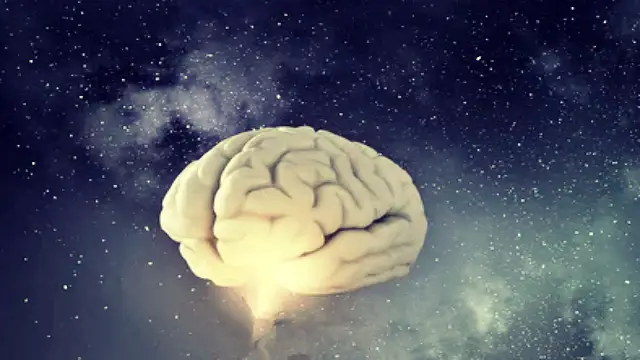Scientific Method
The scientific method is the way scientists investigate the world and produce knowledge about it. Colloquially the term usually refers to an idealized, systematic approach that is supposed to characterize all scientific invetigation. It is distinguished from other routes to knowledge by its use of controlled experiments and its requirement that results be reproducible. Many scholars do not believe in the existence of such a method, however, or they do not believe that it accurately describes science. The actual methods of scientists, they argue, are less ideal and more haphazard.
Key Points
The question of how science operates is not only academic. In the judicial system and in policy debates, a study’s deviation from accepted scientific practice is grounds to reject it as “junk science.” Whether they are diagnosing a patient, investigating a murder or researching a social trend, non-scientists cite “the scientific method” as a paradigm. Methodical or not, science represents a standard of proficiency and reliability.
A summary of the scientific method
Contray to popular belief, there is no method that scientists precisely follow as one would follow an algorithm. However, there is more or less a well-defined model that describes how science operates. It comprises these steps:
- Observe: Observe or read about a phenomenon.
- Hypothesize: Wonder about your observations, and invent a hypothesis, a ‘guess’, which could explain the phenomenon or set of facts that you have observed.
- Predict: Use the logical consequences of your hypothesis to predict observations of new phenomena or results of new measurements.
- Verify: Perform experiments to test these predictions, to find just which prediction occurred.
- Evaluate: Search for other possible explanations of the result until you can show that your guess was indeed the explanation, with confidence.
- Publish: Tell others of your results. Other scientists can then review your reasoning and see if they can also repeat the result. This is known as peer review.
These steps are repeated continually, building a larger set of well-tested hypotheses to explain more and more phenomena. These steps are not necessarily always followed in the pattern shown above. For example, theoretical physicists often develop multiple new hypotheses before selecting which phenomena to observe. See the article on Philosophy of science for more on this.
Do scientists really follow the scientific method?
As stated above, there is no one “scientific method” that all scientists follow as an algorithm. Science allows for creativity, genius, inspiration and new ideas to enter at any stage in the scientific process. What differentiates science from non-science is that such creativity is tested against experimental reality.
There are no guidelines for the production of new hypotheses. The history of science is filled with stories of scientists describing a “flash of inspiration”, or a hunch, which then motivated them to look for evidence to support or refute their idea. The anecdote that an apple falling on Isaac Newton’s head inspired his theory of gravity is a popular example of this (there is no evidence that the apple fell on his head; all Newton said was that his ideas were inspired “by the fall of an apple.”) Kekule’s account of the inspiration for his hypothesis of the structure of the benzene-ring (dreaming of snakes biting their own tails) is better attested.
Scientists tend to look for theories that are “elegant” or “beautiful”; in contrast to the usual English use of these terms, scientists have a more specific meaning in mind. “Elegance” (or “beauty”) refers to the ability of a theory to neatly explain all known facts as simply as possible, or in a manner consistent with Ockham’s Razor.
In 1962 Thomas Kuhn published his essay The Structure of Scientific Revolutions, a seminal work on the practice and process of science. Kuhn suggested that sociological mechanisms significantly affect the rejection of older scientific theories and the acceptance of new ones. According to Kuhn, when a scientist encounters an anomaly that is not explained by the scientific community’s currently accepted general paradigm or theory, that community can ignore it (the increasing problems with Ptolemaic epicycles in accounting for the motion of the planets was a long standing case), but is often compelled to accommodate it by either modifying the existing theory or replacing it with a new one. A paradigm shift occurs when a new paradigm gains wider acceptance than a pre-existing one. It is at this point that sociological factors may partly influence that abandonment. Kuhn postulates that “normal science” continues on after the adoption of a new paradign, punctuated with occasional scientific revolutions as later anomalies arise and paradigm shifts occur.
The typical example used in Kuhnian explanations is the development of astromonical theory that began, more or less, with the Aristotelian model of the universe: “The earth is the center of a pristine, perfect universe,” and all motions in such a universe must be circular. The Aristotelian model was afflicted with various anomalies, such as the apparent retrograde motion of the planets, which were accomodated by modifications of the model. Nicolaus Copernicus’s model differed by placing the sun at the center of planetrary motion. Both Kepler and Galileo found evidence that supported the heliocentric model. Aristotle’s laws were replaced by Isaac Newton, and eventually by Albert Einstein’s General Relativity. This example demonstrates that much time may pass before a substitute paradigm is widely accepted. The Aristotelian model dominated Western thought for more than 2000 years before Newton’s viewpoint took its place.
Late 20th century study on the scientific method has focused on quasi-empirical methods, such as peer review, the spread of notations, which are the key common concern of philosophy of science, and the philosophy of mathematics.
History is replete with examples of accurate theories ignored by peers, and inaccurate ones propagated unduly, due to social factors. The establishment of “official” scientific doctrine in the former Soviet Union is a case in point.
Scientists differ on how ‘real’ their models of reality are – the traditional concern of philosophy of science itself. Some writers (non-scientists) involved with deconstructionism adopt a position of extreme skepticism, and argue that no empirical methods can validate any given theory, and therefore all of science must be seen as quasi-empirical. They argue that science is just a social construction; it is only a way that human cultures come to agree on facts, notations, and predictions.
History of the scientific method
The earliest foundations of the scientific method are often credited to Roger Bacon in England and Galileo Galilei in Italy. Later contributions by Francis Bacon, Rene Descartes and others have added to the understanding of scientific method. Some historians of science believe that the scientific method was actually developed centuries earlier, in the Islamic world. See The experimental method in the Islamic World (article in progress).
The scientific method in detail
Observation
The scientific method begins with observation. Observation demands careful measurements.
Scientists use operational definitions of their measurements; measurements are defined in terms of physical actions that can be performed by anyone, rather than being defined in terms of abstract ideas or common understanding.
For example, the term “day” is useful in ordinary life and we don’t have to define it precisely to make use of it. But in studying the motion of the Earth, you have to define the words you use very precisely; science makes two operational definitions of a day: a solar day is the time between observing the sun at a particular position in the sky and observing it in the same position the next time; a sidereal day is the time between observing a specific star in the night sky at a specific position, and that same observation made the next time. These two different definitions are important since they are slightly different.
Hypothesis
To explain the observation, scientists use whatever they can (their own creativity (currently not well understood), ideas from other fields, or even systematic guessing, or any other methods available) to come up with possible explanations for the phenomenon under study. The most important aspect of an explanation (ie, an hypothesis) is that it must be falsifiable, that is, capable of being demonstrated wrong.
The scientist should also be — but need not be and often is not — impartial, considering all known evidence, and not merely evidence which supports the hypothesis under development. This makes it more likely that the hypotheses formed will be relevant and useful and not subject to external bias and distortion.
In the extremely rare cases where no better grounds for discriminating between rival hypotheses can be found, the bias scientists almost always follow is the principle of Occam’s Razor; one chooses the simplest explanation for all the available evidence.
Prediction
A hypotheses must make specific predictions; these predictions can be tested with concrete measurements to support or refute the hypothesis. For instance, Albert Einstein’s General Relativity makes many specific predictions about the structure of space-time, such as the prediction that light bends in a strong gravitational field, and the amount of bending depends in a precise way on the strength of the gravitational field. Observations made of a 1919 solar eclipse supported the hypothesis (ie, General Relativity) as against all other possible hypotheses which did not make such a prediction. (Later experiments confirmed this even further.)
Deductive reasoning is generally used to develop predictions used to test a hypothesis.
Verification
Probably the most important aspect of scientific reasoning is verification: The results of one’s experiments must be verified.
This is both useful as a practical matter (e.g., in chemical engineering or planetary exploration), but have sometimes demonstrated previously unknown variations from currently accepted theory (e.g., the CPT experiments of Yang and Lee in the 1950s which forced fundamental changes in much of particle physics). Ideally, the experiments performed should be fully described so that anyone can reproduce them, and many scientists should independently verify every hypothesis. Results which can be obtained from experiments performed by multiple scientists are termed reproducible and are given much greater weight in evaluating hypotheses than non reproducible results.
Scientists must design their experiments carefully. For example, if the measurements are difficult to make, or subject to observer bias, one must be careful to avoid distorting the results by the experimenter’s wishes. When experimenting on complex systems, one must be careful to isolate the effect being tested from other possible causes of the intended effect (this results in a controlled experiment). In testing a drug, for example, it is important to carefully test that the supposed effect of the drug is produced only by the drug itself, and not by the placebo effect or by random chance. Doctors do this with what is called a double-blind study: two groups of patients are compared, one of which receives the drug and one of which receives a placebo. No patient in either group knows whether or not they are getting the real drug; even the doctors or other personnel who interact with the patients don’t know which patient is getting the drug under test and which is getting a fake drug (often sugar pills), so their knowledge can’t influence the patients either.
“Verification” may be a misleading word, in that we don’t really “confirm” or “verify” a hypothesis so much as we fail to refute it.
Evaluation
Any hypothesis, no matter how respected or time-honored, must be discarded once it is contradicted by new reliable evidence. Hence all scientific knowledge is always in a state of flux, for at any time new evidence could be presented that contradicts long-held hypotheses. A classic example is the explanation of light. Isaac Newton’s particle paradigm was overturned by the wave theory of light, which explained diffraction, and which was held to be incontrovertible for many decades.The wave paradigm, in turn was refuted by the discovery of the photoelectric effect. The currently held theory of light holds that photons (the ‘particles’ of light) are both waves and particles; experiments have been performed which demonstrate that light has both particle and wave properties.
The experiments that reject a hypothesis should be performed by many different scientists to guard against bias, mistake, misunderstanding, and fraud. Scientific journals use a process of peer review, in which scientists submit their results to a panel of fellow scientists (who may or may not know the identity of the writer) for evaluation. Scientists are rightly suspicious of results that do not go through this process; for example, the cold fusion experiments of Fleischmann and Pons were never peer reviewed — they were announced directly to the press, before any other scientists had tried to reproduce the results or evaluate their efforts. They have not been reproduced elsewhere as yet; and the press announcement was regarded, by most nuclear physicists, as very likely wrong. Proper peer review would have, most likely, turned up problems and led to a closer examination of the experimental evidence Fleischmann, Pons, et al believed they had. Much embarrassment, and wasted effort worldwide, would have been avoided.
Peer review and documentation
The disclosure and documentation of experimental and observational methods is of the utmost importance. These are what makes it possible for others to attempt to reproduce the observations independently. Failure to disclose methods and techniques has led to several famous scandals as with Paul Kammerer’s discredited work with toads. Such discipline is even more important when the evidence being presented or the hypothesis being supported have not been previously reported. The person who presents undocumented original material risks having his work peremptorily dismissed without any further consideration.
Criticisms of the scientific method
In any description of the scientific method, key themes of empiricism, that is knowledge based on observation, and rationalism, that is knowledge based on deductive reasoning, become apparent. (See Philosophy of science). It is often stated that the natural sciences in our society owe their success to the diligent application of the scientific method. Its proponents claim that it is rational and logical. However, as in all areas of human endeavor, there is some debate as to its nature and utility. Proponents of the scientific method caricature its detractors as ultra-relativists, whereas some detractors caricature proponents as positivists, and consider that the scientific method does not adequately explain the success of science in our society.
Imre Lakatos showed how people studying the natural world have, throughout the ages, constructed historical accounts to suit their pet philosophies and methods. This “rational reconstruction” of the history of science is then used to justify certain ideological assumptions, producing what might tentatively be called a mythology of science. Like Kuhn’s arguements, this is essentially a sociological or psychological observation about the practice of actual scientests, not an inherent feature of science apart from some of its practicioners.
The philosopher Paul Feyerabend argued that descriptions of the scientific method often do not match how scientific discoveries have actually occurred in history. Feyerabend objected to any single prescriptive scientific method on the grounds that science has no single aim. Without a fixed ideology, or the introduction of religious tendencies, the only approach which does not inhibit progress (using whichever definition of progress you see fit) is “anything goes”: “‘anything goes’ is not a ‘principle’ I hold […] but the terrified exclamation of a rationalist who takes a closer look at history.” (Feyerabend, 1975).
Feyerabend’s criticisms have been used by some to argue that science does not tend toward the truth, that it has no advantage over other ways of examining the world, and that its intellectual output largely is a socio-historical accident of the culture and values of scientists. Feyerabend himself strongly opposed this conclusion:
"How can an enterprise {science} depend on culture in so many ways, and
yet produce such solid results? ....Movements that view quantum
mechanics as a turning-point in thought - and that include fly-by-night
mystics, prophets of a New Age, and relativists of all sorts - get
aroused by the cultural component and forget predictions and
technology." (Source: Paul Feyerabend. Atoms and Consciousness', in
Common Knowledge Vol. 1, No. 1 1992: 28-32)"Goals of scientific method
Because science has no experimental access to some things, there is no ‘science of them’. Despite some popular impressions, it is not the goal of science to answer all questions, nor even to ‘explain’ every phenomenon. Some things are not now experimentally accessible. And science does not produce truth; it merely improves the currently best hypothesis about some aspect of reality. It cannot be a source of value judgements, though it can certainly speak to matters of ethics and public policy by pointing to the likely consequences of actions. However, science can’t tell us which of those consequences to desire or which is ‘best’. What one projects from the currently most reasonable scientific hypothesis onto other realms of interest is not a scientific issue, and the scientific method offers no assistance for those who wish to do so. Scientific justification for many things is, nevertheless, often claimed.
Scientific Method and Public Policy Questions
In matters of public policy, the quality of ‘scientific support’ claimed for a position is generally inversely related to that position’s benefit to the claimer. In short, if ‘junk science’ will help support a position that will benefit me, only considerable ethical uprightness will prevent me from using it. Such ethical standards are regrettably less common than we would all hope among scientists as well as everyone else. Since the audience (i.e., everyone for some such debates) is rarely in a position to independently evaluate the scientific support claimed by anyone on any side of the issue, much ‘junk science’ has achieved prominence. Without mastering the underlying science, about the only thing the non-scientist can do is attempt to filter out economic and social interests, taking seriously only those who don’t seem to have a stake in having one or another position adopted as a proxy for evaluating the quality of the science.
For instance, a chemical company caught dumping something in a local stream claims it has scientific support for the harmlessness of the dumping and therefore nothing should be done, certainly not at its expense, about the dumping. The local law provides that those who dump dangerous stuff should clean it up. Local environmentalists claim to have scientific support for the danger and that therefore the company should be compelled to clean up the contamination. What should local government do? How should the citizenry judge the government’s performance? A first evaluation is probably to look to ‘the science’. But, whose analysis is correct? Perhaps neither, but as a first attempt to decide between the two positions, the company’s financial interest indicates that its scientific support need not be believed out of hand. It has a higher burden of ‘disbelief’ because of that interest. In such cases, governments often call for an independent scientific evaluation and announce they will take action based on that report. At which point, the dispute will change into an attempt to find ‘independent’ scientists who are believed to be likely to support one side or the other.
These disputes are often wholly unscientific since they are essentially economic or social, not scientific.



















